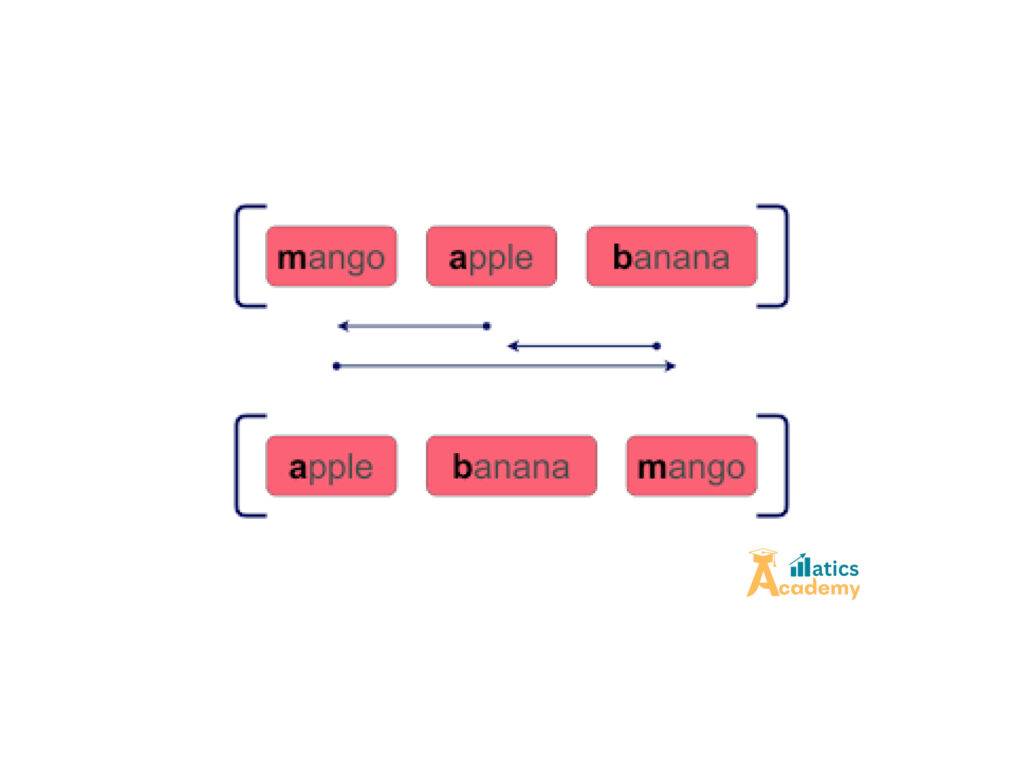In Python, sorting lists is a fundamental task that enhances the efficiency and clarity of your code. Whether you’re dealing with simple numerical data, strings, or complex objects, mastering list sorting is essential for developers and data enthusiasts. This article explores the diverse sorting techniques in Python, complete with examples and explanations, including insights on sorting Python lists.

Introduction to Python List Sorting
Sorting allows you to arrange elements of a list in a specific order, either ascending or descending. Python provides several built-in methods and advanced techniques to achieve this. Here’s a quick overview:
sort()Method: Modifies the list in place.sorted()Function: Returns a new sorted list without modifying the original.- Custom Sorting: Using
keyandlambdafor custom order.
1. Using the sort() Method
The sort() method sorts the list in place. It modifies the original list and does not return a new one.
numbers = [5, 2, 9, 1, 5, 6]
numbers.sort()
print("Sorted list:", numbers)
Explanation of Key Concepts:
- numbers.sort():
- This is an in-place sorting method that rearranges the elements of the list in ascending order (default behavior).
- Since it’s in-place, the original list is modified, and no new list is created.
- Output:
- After calling .sort(), the numbers list is updated to [1, 2, 5, 5, 6, 9], which is printed to the console.
To sort in descending order:
numbers.sort(reverse=True)
print("Descending:", numbers)
Explanation of Key Concepts:
- reverse=True:
- The reverse=True argument changes the sorting order from the default ascending to descending.
- Like
sort(), this method modifies the list in-place.
- Output:
- After calling .sort(reverse=True), the
numberslist becomes [9, 6, 5, 5, 2, 1], and this sorted list is printed.
- After calling .sort(reverse=True), the
2. Using the sorted() Function
The sorted() function is ideal when you want to retain the original list.
words = ["apple", "banana", "cherry"]
sorted_words = sorted(words)
print("Original:", words)
print("Sorted:", sorted_words)
Explanation of Key Concepts:
- sorted():
- Unlike the .sort() method, sorted() creates and returns a new sorted list without modifying the original list.
- It works with strings, sorting them lexicographically (alphabetical order).
- Output:
- The original list
wordsremains [“apple”, “banana”, “cherry”]. - The sorted_words variable stores the new sorted list, which is [“apple”, “banana”, “cherry”]. Both lists are printed separately to illustrate that the original list is unchanged.
- The original list
3. Sorting with a Custom Key
Python allows custom sorting using the key parameter. This is useful for sorting strings by length or objects by attributes.
Sorting by Length
words = ["apple", "banana", "cherry", "kiwi"]
words.sort(key=len)
print("Sorted by length:", words)
Sorting Complex Objects
students = [
{"name": "Alice", "score": 90},
{"name": "Bob", "score": 85},
{"name": "Charlie", "score": 95},
]
students.sort(key=lambda x: x['score'])
print("Sorted by score:", students)
4. Advanced Sorting Techniques
Sorting with Tuples
Tuples can be sorted based on the first element or a custom rule.
data = [(1, 'apple'), (3, 'banana'), (2, 'cherry')]
data.sort()
print("Sorted tuples:", data)
Case-Insensitive Sorting
words = ["Banana", "apple", "Cherry"]
sorted_words = sorted(words, key=str.lower)
print("Case-insensitive sort:", sorted_words)
Sorting Using operator Module
The operator module simplifies key-based sorting.
from operator import itemgetter
students.sort(key=itemgetter('score'))
print("Sorted by score using operator:", students)
5. Tips for Sorting Large Lists
For large datasets, sorting efficiently is crucial. Here are some tips:
- Use
sorted()for Immutability: Avoid modifying the original list when working with critical data. - Generators for Memory Efficiency: Use generator expressions to process items one at a time.
- Leverage External Libraries: Libraries like NumPy and pandas offer optimized sorting for numerical data.
Related Topics:
Interview Questions
How would you optimize the sorting of a list containing millions of product prices for a recommendation engine?(Amazon)
Answer:
- Efficient Sorting Algorithm: Use Python’s built-in
sorted()function or thesort()method, which internally use Timsort, optimized for real-world data and large lists.
prices = [300.0, 150.0, 400.0, 200.0, 250.0]
sorted_prices = sorted(prices)
print("Sorted Prices:", sorted_prices)
- Divide and Conquer: If the data is too large to fit in memory, use external sorting techniques (e.g., chunking and merging).
- Custom Key Optimization: Use a
keyparameter if additional computation is required for each element, to minimize redundant calculations.
2. What is the difference between sort() and sorted() in Python, and when would you choose one over the other?(Google)
sort():
- Modifies the original list in place.
- Does not return a new list.
- Use when you don’t need to retain the original order of the list.
sorted():
- Returns a new sorted list without modifying the original.
- Use when you want to keep the original list intact.
Key Difference:
Use sort() for in-place sorting to save memory, and sorted() for creating a new sorted version when immutability is required.
3. Explain how you would sort a list of employee records by their joining date using custom sorting techniques in Python.(Microsoft)
- Store employee records as dictionaries or objects, including joining dates.
- Use the
keyparameter with a lambda function to sort by the joining date.
employees = [
{"name": "Alice", "joining_date": "2021-06-15"},
{"name": "Bob", "joining_date": "2020-03-12"},
{"name": "Charlie", "joining_date": "2022-01-10"},
]
employees.sort(key=lambda x: x['joining_date'])
print("Sorted by Joining Date:", employees)
- Alternatively, use the
datetimemodule for precise date comparison:
from datetime import datetime
employees.sort(key=lambda x: datetime.strptime(x['joining_date'], "%Y-%m-%d"))
print("Sorted by Joining Date with Datetime:", employees)
Quizz time
Question
Your answer:
Correct answer:
Your Answers
